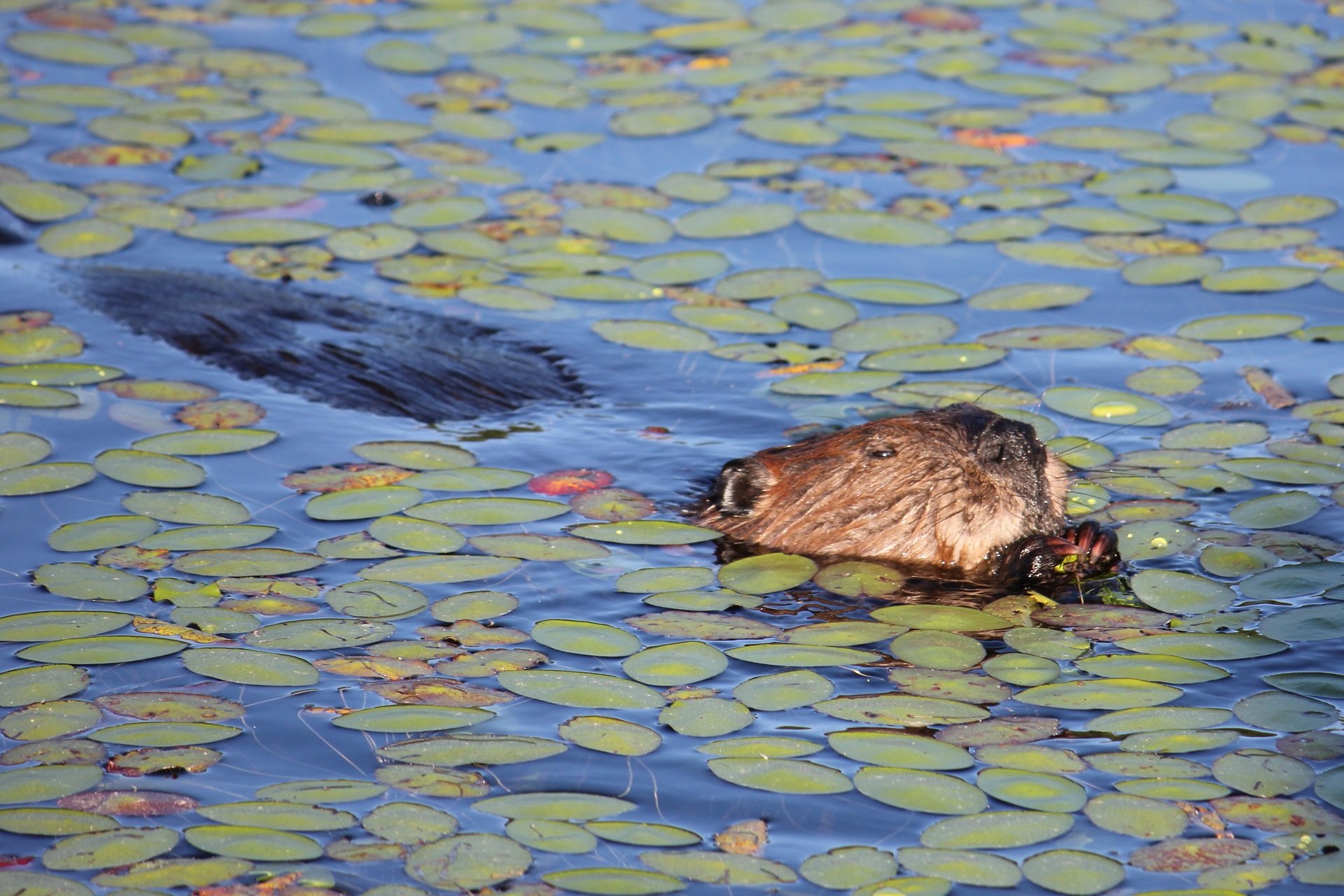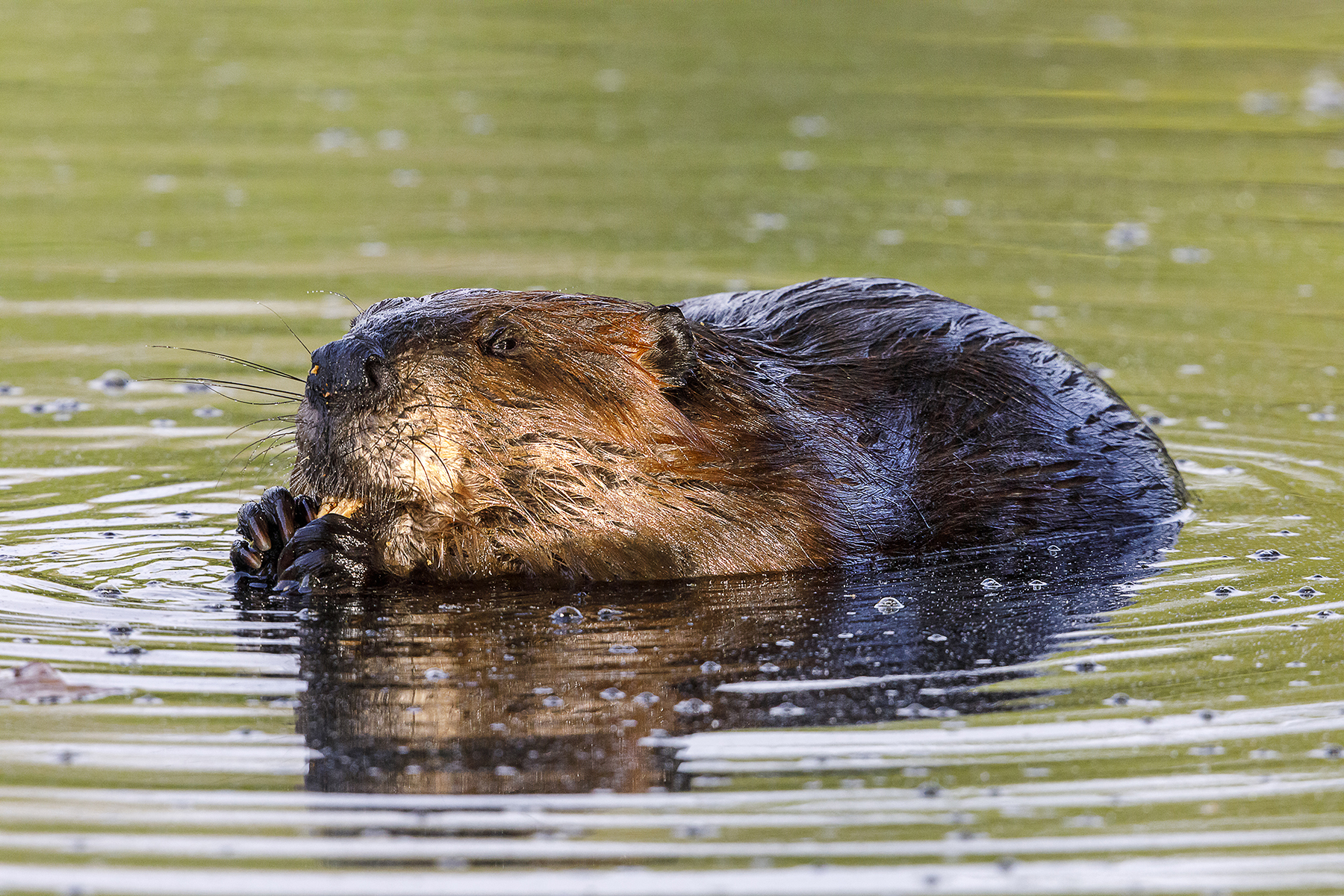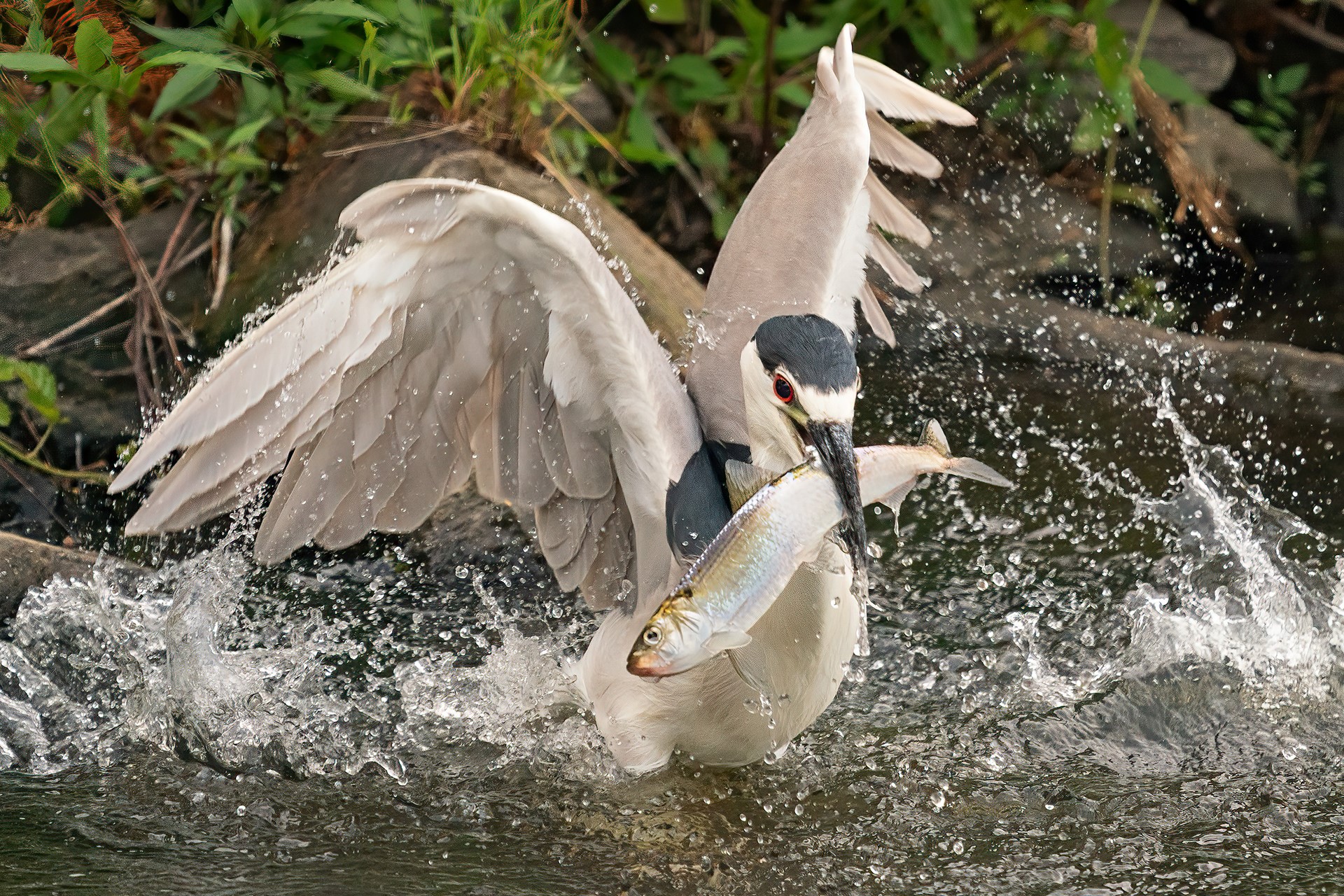All native wildlife in Massachusetts contributes to biodiversity, from a tiny Frosted Elfin butterfly to a massive Moose. Take a closer look at three species in three different habitats and the work Mass Audubon is doing to help protect biodiversity.
Beavers
Even if you have never seen a beaver up close and personal, you have likely seen their handiwork in wetlands and ponds across Massachusetts. These industrious mammals spend their days collecting and storing food, gnawing on shrubs and trees, and maintaining their waterways. Known for their architectural skills, they also build dams, which block the flow of water.
Beyond helping beavers, dams also play a part in expanding wetlands and providing habitat and food for a wide variety of plants and animals. When dams lead to flooding, trees often die off, creating nesting sites for birds such as Great Blue Herons, Tree Swallows, and Wood Ducks. These new ponds also become homes to other animals, including frogs, turtles, and otters.
Once beavers have exhausted their food supply, they move on. The dam erodes and the pond drains, creating an early successional habitat (one that develops shortly after a disturbance) ideal for their preferred food (Aspen, Willow, Birch, and Alder trees). Without beavers, there would be less early successional habitat and shrubland, which increases forest biodiversity in a region with mainly closed-canopy forests.
Beaver-created wetlands also help people by storing and slowly releasing floodwater, which controls downstream flooding. They improve water quality by removing or transforming excess nutrients, trapping silt, binding and removing toxic chemicals, and removing sediment. Flooded areas can also recharge and maintain groundwater levels, providing flow to streams even during droughts.
By protecting their habitats and waterways, Mass Audubon helps beavers by giving them the space they need to thrive. Many of our wildlife sanctuaries provide a welcome home for beavers, including Pleasant Valley in Lenox, Ipswich River in Topsfield, and Broadmoor in Natick.
Black-crowned Night Herons
While the Black-crowned Night Heron is the most widespread heron in the world (it breeds on every continent except Australia and Antarctica), its populations are declining in the Northeast. You may find these crepuscular (i.e. active at dawn and dusk) birds foraging for fish, worms, insects, rodents, eggs, and even rotting food along the coast in marshes, ponds, and waterways.
These stocky birds, when adults, have glowing red eyes, dark beaks, and a black streak running from their heads down their backs. Preferring to nest in large colonies like other herons, these wading birds favor nesting habitat with minimal human disturbance and the absence of predators, such as islands. Since colonial nesting species have limited islands to breed on, Black-crowned Night Herons are in decline in the Northeast.
The 17-acre Kettle Island Wildlife Sanctuary off the coast of Manchester-by-the-Sea has long served as a sanctuary primarily for nesting coastal birds such as the Black-crowned Night Heron, Great Egret, Snowy Egret, and Glossy Ibis. Over the years, though, invasive trees like Norway Maples have taken over portions of the island, limiting proper nesting locations for these birds.
Mass Audubon recently began restoring Kettle Island to provide additional nesting habitat for these birds. Mature non-native Norway Maples have been replaced with native trees such as Black Cherry and Red Cedar, as their height and branch structures are more suitable nesting habitat for wading birds. Not only does this improved nesting habitat benefit wading birds like the Black-crowned Night Heron, it also provides a diversity of habitats for stopover, foraging, nesting, breeding, and cover for other bird species, helping to curb population declines.
River Herring
Not one but two types of fish, River Herring refers to both Alewife and Blueback Herring. As anadromous (migratory) fish, they live in the ocean except in the spring, when adults (3+ years) swim up rivers to spawn.
A consumer of plankton and valuable source of food for birds, fish, and mammals, River Herring have a significant ecological function in rivers. River Herring also serve as conduits for nutrients between freshwater and marine environments. But their population has suffered due to human-made dams, roads, and other structures that block their ability to reach spawning habitat.
The restoration of Tidmarsh Wildlife Sanctuary in Plymouth serves as a testament to what happens when land is brought back to its original form. Once a working cranberry farm, this landscape underwent the largest freshwater ecological restoration ever completed in the Northeast.
As the dams, dikes, and ditches necessary for operating a cranberry farm were no longer needed, nine dams and multiple tons of sediment were removed to reconnect Beaver Dam Brook, Fresh Pond, and the Foothills headwaters to the ocean.
Soon after, native plants began to grow and attract a wide variety of insects, reptiles, and bird species that had not been seen on this property for a century or more. And the reconnected waterways brought back Alewife to spawn in upstream spawning grounds (Fresh Pond) and the Blueback to spawn in the riverine system.
Support Efforts to Protect Biodiversity
This kind of ecological work can only happen with the support of our volunteers, members, and donors. You can make an impact not only to protect wildlife but also to create habitats that benefit clean air and water and fight the effects of climate change.
Stay Connected
Don't miss a beat on all the ways you can get outdoors, celebrate nature, and get involved.






